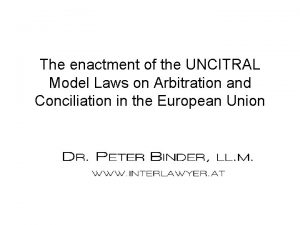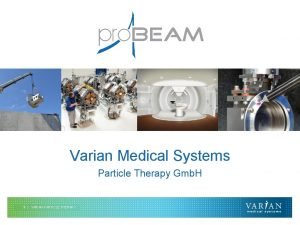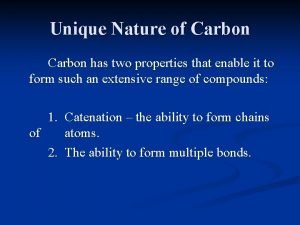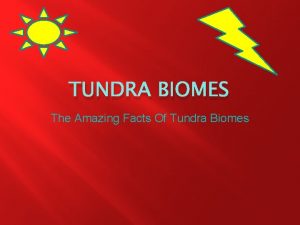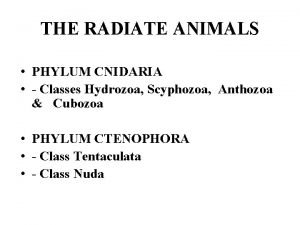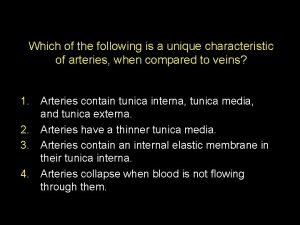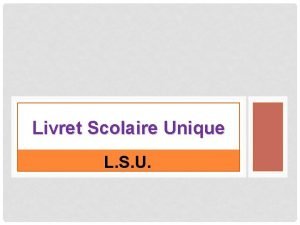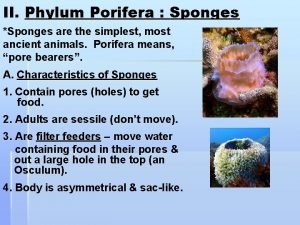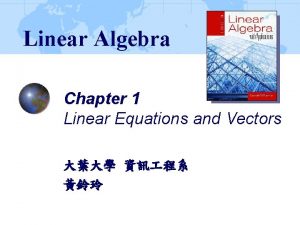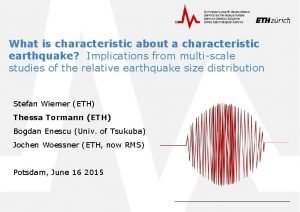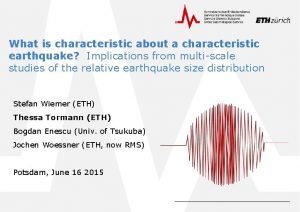Techniques and Unique and Characteristic Signatures to Identify



























































- Slides: 59

Techniques and Unique and Characteristic Signatures to Identify Hydrino are Predicted from Exact Closed-Form Solutions of Atoms and Molecules

Catalytic Reaction of Atomic Hydrogen to Hydrino® 1. Atomic hydrogen reacts with an energy acceptor called a catalyst wherein energy is transferred from atomic hydrogen to the catalyst which forms an ion due to accepting the energy 2. Then, the negative electron drops to a lower shell closer to the positive proton to form a smaller hydrogen atom called a “hydrino” releasing energy that ultimately is in the form of heat 3. The catalyst ion regains its lost electrons to reform the catalyst for another cycle with the release of the initial energy accepted from hydrogen. With the imposition of an arc current condition, the limiting space charge of the ionized electrons is eliminated and the rate becomes massively high. Company Confidential 2

Optical Power Measurement Using NIST Standards Over 10800 nm Region: Spectral Emission in the High Energy Region Only Validated Hydrino Reaction’s Extraordinary High-Energy Continuum Light and Optical Power at over 1, 000 W Levels Company Confidential 3

4. 6 MW Characteristic H to H 2(1/4) Transition EUV Continuum Radiation with a Predicted 10. 1 nm Cutoff • Hydrated silver shots comprising a source of H and HOH catalyst were ignited by passing a low voltage, high current through the shot to produce explosive plasma that emitted brilliant light predominantly in the shortwavelength 10 to 300 nm region. • The peak power of 20 MW and time-average power of 4. 6 MW was measured using absolute spectroscopy over the 22. 8 -647 nm region wherein the optical emission energy was 250 times the applied energy. • The wavelength calibrated and absolute intensity calibrated spectrum (10 -45 nm) of the emission of hydrated silver shots recorded on the GIS with a Zr filter showed the EUV continuum cutoff at 10. 1 nm that matches dark matter emission. R. Mills, Y. Lu, R. Frazer, “Power Determination and Hydrino Product Characterization of Ultra-low Field Ignition of Hydrated Silver Shots”, Chinese Journal of Physics, Vol. 56, (2018), pp. 1667 -1717.

Massive Ionization Determined by Stark Broadening • • Stark broadening of the H alpha line of 1~1. 3 nm corresponds to an electron density of 2. 4 -3. 5 X 1023/m 3. The Sun. Cell® gas density was calculated to be 2. 5 X 1025 atoms/m 3 based on an argon-H 2 pressure of 800 Torr and temperature of 3000 K. The corresponding ionization fraction was about 10%. Given that argon and H 2 have ionization energies of about 15. 5 e. V and a recombination lifetime of less than 100 us at high pressure, the power density to sustain the ionization is

Energetic Signatures In addition to hydrogen line broadening, other signatures of the energetics of the hydrino reaction are chemically generated or so called resonance transfer (RT) plasmas, plasma afterglow, high optical output power, and an inverted hydrogen population.

Chemically-Generated RT Plasma • Hydrogen Plasmas Formed with Incandescently Heating of Hydrogen Gas in the Presence of Trace Amounts of Potassium Carbonate. H. Conrads, R. Mills, Th. Wrubel, “Emission in the Deep Vacuum Ultraviolet from a Plasma Formed by Incandescently Heating Hydrogen Gas with Trace Amounts of Potassium Carbonate, ” Plasma Sources Science and Technology, Vol. 12, (2003), pp. 389 -395.

Experimental Set-up for Chemically-Generated RT Plasma Tungsten coil heater Gas inlet Turbo pump Collimator Quartz cell Grating Light Plasma Titanium mesh screen Pump VUV spectrometer Exit slit Entrance slit Photon detector CEM or PMT

Inverted Hydrogen Population The VUV spectra (900– 1300 Å) of the cell emission from hydrogen microwave plasma (dotted line) and the KNO 3–H 2 rt-plasma (solid line) with an inverted Lyman population. R. L. Mills, P. Ray, “Stationary Inverted Lyman Population Formed from Incandescently Heated Hydrogen Gas with Certain Catalysts, ” J. Phys. D, Applied Physics, Vol. 36, (2003), pp. 1504– 1509.

Plasma Afterglow Emission of the cell as a function of time while the filament current was turned off and on. The plasma decay with no electric field present followed the decay of atomic hydrogen from the filament dissociator. Upon restoration of the filament temperature, dissociation and the plasmas resumed. J. Conrads, R. Mills, Th. Wrübel, Plasma Sources Sci. Technol. 12, 389 (2003).

Fast H Excessive Doppler hydrogen line broadening in low pressure H 2 discharge corresponding to fast H atom with energies of 60 -70 e. V.

Commercial Parr Water Bath Calorimetry on Hydrated Silver Shot Detonation Validated Hydrino Reaction Power at over 100, 000 W Levels Company Confidential 12

Novel Hydrino Compounds 13

Methods for measuring Hydrino® product • H 2 (1/4) ro-vib spectrum in crystals by e-beam excitation emission spectroscopy • H 2 (1/4) X-ray photoelectron spectroscopy (XPS) binding energy • • • H 2 (1/4) Fourier Transform Infrared (FTIR) • • • MAS H NMR H 2 (1/4) Inverse Raman effect (IRE) H 2 (1/4) Photoluminescence spectroscopy Electron Paramagnetic Resonance Spectroscopy (EPR) Time of Flight Secondary Ion Mass Spectroscopy (To. FSIMs) and Electrospray Ionization Time of Flight (ESITo. F) identification of hydrino compounds Thermogravimetric analysis (TGA) Cryogenic gas chromatography Fast H in plasma including microwave and rt-plasmas Rt-plasma with filament and discharge Afterglow • • • GUT • Astronomy data verifying hydrinos such as H(1/2), H(1/3), and H(1/4) hydrino transitions • • H (1/4) spin-nuclear hyperfine transition • Hydrino trapped on witness plates and in alkali halidehydride crystals Arbin-Instrument measured electricity gain over theoretical in CIHT cells • • • Polymeric molecular hydrino compounds Sun. Cell® fully ionized energetic plasma and electromagnetic pulse • 20 MW extreme ultraviolet NIST-calibrated optically measured power in shot blasts • • Commercial bomb calorimetry of energetic shots Molecular modeling H(1/2) and H(1/4) hydrino transitions observed by continuum radiation In situ H 2 (1/4) gas synthesis in argon and analysis 14 Highly pumped states H inversion Commercial differential scanning calorimetric (DSC) and water flow calorimetry with multiple solid fuels chemistries Shock wave 10 X TNT

Identification of Molecular Hydrino by the Gold Standard: Rotational Energies that Match the Predicted p 2 Energies of H 2 Using Exact Closed-Form Solutions of H 2+ and H 2 The Laplacian in ellipsoidal coordinates is solved with the constraint of nonradiation The total energy of the hydrogen molecular ion having a central field of +pe at each focus of the prolate spheroid molecular orbital The total energy of the hydrogen molecule having a central field of +pe at each focus of the prolate spheroid molecular orbital 15

The Nature of the Chemical Bond of Hydrogen cont’d Front view The Internuclear Distance, 2 c', which is the distance between the foci is The experimental internuclear distance is The Semiminor Axis, b, is . . The Eccentricity, e, is 16

Charge-Density Function 17

Molecular Orbital Current Corresponding to Electron Spin s=1/2 A representation of the z-axis view of the continuous charge-density and supercurrent-density distributions of the MO with 144 vectors overlaid giving the direction of the currents (nuclei not to scale). 18

The calculated and experimental parameters of H 2, , D 2, and CONFIDENTIAL 19

HOH-Argon E-beam Emission Hydrino H 2(1/4) Ro-vibrational P Branch Of the noble gases, argon uniquely contains trace hydrino gas due to contamination during purification. Argon and oxygen co-condense during cryodistillation of air and the oxygen is removed by reaction with hydrogen on a recombination catalyst such as platinum whereby hydrino is formed during the recombination reaction due to the subsequent reaction of HOH catalyst with H. The known peaks are H I, O 2 bands. The unknown peaks match molecule hydrino (H 2(1/4) P branch) with no other unassigned peaks present in the spectrum. P(3) P(2) P(4) P(5) P(1) O 2 bands 20

HOH-Argon E-beam Emission Hydrino H 2(1/4) Ro-vibrational P Branch P(3) P(2) P(4) P(5) P(1) O 2 bands HOH-Argon E-beam Emission Linear Regression 21

HOH-Argon E-beam Emission Hydrino H 2(1/4) Ro-vibrational P Branch H 2(1/4) gas of an argon/H 2(1/4) mixture formed by recombination of hydrogen and oxygen on a supported noble metal catalyst in an argon atmosphere was enriched as indicated by the dramatic increase in the ro-vibrational P branch of H 2(1/4) observed by ebeam excitation emission spectroscopy.

P(4) E-beam Emission Hydrino H 2(1/4) Ro-vibrational P Branch P(3) P(5) P(2) P(6) P(1) P(7) P(5) E-beam Emission Linear Regression 23

Vibrational and Rotational Predicted Energies • Hydrogen molecular vibrational energy, Evib, for the v = 0 to v = 1 transition of hydrogen type molecules H 2(1/p) is Evib = p 2× 0. 515912 e. V • The rotational energies, E , for the J to J+1 transition of hydrogen rot molecules H 2(1/p) is Erot = p 2×(J+1)× 0. 01509 e. V • The emitters in both HOH-Ar and a solid impregnated with hydrino gas match emission spacing's and match the rotationally predicted energies for H 2(1/4). The emitter in HOH-Ar matches the vibrationally predicted energy for H 2(1/4). • *The vibrational energy for H 2(1/4) in a solid matrix is shifted due to the increased effective mass from the solid matrix interaction analogous to the cases of H 2 in solid matrices such as Si and Ge as discussed in primary literature. [1]: R. Mills, The Grand Unified Theory of Classical Physics; September 2016 Edition, posted at http: //brilliantlightpower. com/bookdownload-and-streaming/ 24

E-beam Emission Hydrino H 2(1/4) Ro-vibrational P Branch is Dependent on Temperature which is Confirmation of Ro-Vibrational Assignment P(4) P(3) Emission spectra were recorded using a Mc. Pherson grazing incidence EUV spectrometer and a CCD detector during electron-beam excitation of KCl getter exposed to thermal decomposition gas from Ga 2 O 3: H 2(1/4) from the Sun. Cell® at 3 ke. V and 30 u. A. The series of peaks matches the H 2(1/4) theoretical rovibrational peaks to within an error of less than 1%. The elimination of the emission while cryocooling and its return at lower intensity at room temperature confirmed that the source of the emission was H 2(1/4) ro-vibration with some H 2(1/4) diffusion loss by thermally cycling. P(5) P(6) P(2) P(1) P(7)

Raman Confirmation of Molecular Hydrino of H 2(1/4) Ro-Vibrational Band Q(0) R(0) P(1) R(1) P(2) R(2) P(3) P(4) P(5) R(3) R(4) Raman-mode second-order photoluminescence spectrum of the KCl getter exposed to thermal decomposition gas from Ga 2 O 3: H 2(1/4) from the Sun. Cell® using a Horiba Jobin Yvon Lab. Ram ARAMIS 325 nm laser. The series 26 of peaks matches theoretical peaks to within an error of less than 1%.

Comparison of the Transition Energies and Transition Assignments with the Observed Raman Peaks Assignment Calculated (cm-1) Experimental (cm-1) Difference (%) P(5) 18, 055 17, 892 0. 91 P(4) 17, 081 16, 993 0. 52 P(3) 16, 107 16, 064 0. 27 P(2) 15, 134 15, 121 0. 08 P(1) 14, 160 14, 168 -0. 06 Q(0) 13, 186 13, 183 0. 02 R(0) 12, 212 12, 199 0. 11 R(1) 11, 239 11, 207 0. 28 R(2) 10, 265 10, 191 0. 73 R(3) 9, 291 9, 141 1. 65 R(4) 8, 318 8, 100 2. 69 27

Raman Confirmation of Molecular Hydrino of H 2(1/4) Rotational Energy The Raman spectrum obtained on a In metal foil exposed to the product gas from a series of solid fuel ignitions under argon, each comprising 100 mg of Cu mixed with 30 mg of deionized water. Using the Thermo Scientific DXR Smart. Raman spectrometer and the 780 nm laser, the spectrum showed an inverse Raman effect peak at 1982 cm -1 that matches 28 the free rotor energy of H 2(1/4) (0. 2414 e. V).

Raman Confirmation of Molecular Hydrino of H 2(1/4) Rotational Energy Raman spectra obtained using the Thermo Scientific DXR Smart. Raman spectrometer and the 780 nm laser on copper electrodes pre and post ignition of a 80 mg silver shot comprising 1 mole% H 2 O, wherein the detonation was achieved by applying a 12 V 35, 000 A current with a spot welder. The spectra showed an inverse Raman effect peak at about 1940 cm-1 that matches the free rotor energy of H 2(1/4) (0. 2414 e. V).

Raman Confirmation of Molecular Hydrino of H 2(1/4) Rotational Energy of Hydrino Web Compound 30

E-beam Emission Hydrino H 2(1/4) Ro-vibrational P Branch of Web Compound Matches that of Gaseous H 2(1/4) Spectrum 31

XPS Total Binding Energy of H 2(1/4) 496 e. V A B The XPS spectra of the hydrino Fe web compound having a peak at 496 e. V assigned to H 2(1/4) wherein other possibilities such Na, Sn, and Zn were eliminated since only Fe, O, and C peaks are present and other peaks of the candidates are absent. A. Survey scan. B. High resolution scan in the region of the 496 e. V peak of H 2(1/4). 32

XPS Total Binding Energy of H 2(1/4) B 496 e. V A The XPS spectra of the hydrino Mo web compound having a peak at 496 e. V assigned to H 2(1/4) wherein other possibilities such Na, Sn, and Zn were eliminated since only Mo, O, and C peaks are present and other peaks of the candidates are absent. Mo 3 s which is less intense than Mo 3 p was at 506 e. V with additional samples that also showed the H 2(1/4) 496 e. V peak. A. Survey scan. B. High resolution scan in the region of the 496 e. V peak of H 2(1/4). 33

496 e. V XPS Confirmation of Molecular Hydrino of H 2(1/4) Binding Energy The XPS spectra on copper electrodes post ignition of a 80 mg silver shot comprising 1 mole% H 2 O, wherein the detonation was achieved by applying a 12 V 35, 000 A current with a spot welder. The peak at 496 e. V was assigned to H 2(1/4) wherein other possibilities such Na, Sn, and Zn were eliminated since the corresponding peaks of these candidates are absent. Raman post detonation spectra showed an inverse Raman effect peak at about 1940 cm-1 that matches the free rotor energy of H 2(1/4) (0. 2414 e. V).

Extraordinary EPR Spectrum of Hydrino Web Compound And Solid Fuel Reaction Product Ballmill Na. OH+KCl 100 80 60 40 20 0 0 1000 2000 3000 4000 5000 6000 7000 -20 -40 -60 • No known EPR active species present. • Shift of 474 G matches theoretical, ΔH = 375 G. • The main parameters of EPR spectrum of tin hydroxyl and superoxide radicals: g-factor and line width ΔH, calculated from the EPR spectra are following: g 1 =2. 0021 and ΔH 1 =1 G, g 2 =2. 0009 and ΔH 2 =0. 8 G. 35

EPR Spectrum of Gallium Reaction Product 4 2 0 -2 0 1000 2000 3000 4000 5000 6000 7000 -4 -6 The EPR (Top-room temperature; Bottom-liquid nitrogen cooled) of the product formed by the dissolving Ga 2 O 3 collected from a hydrino reaction run in the Sun. Cell® in aqueous Na. OH and then evaporating the water to form Na. Ga(OH)4 further comprising H 2(1/4). The split peak at 1825 G matches that predicted of a maximum 1895 G shift for the centered square planar pentameric complex of [H 2(1/4)]2. Gallium, sodium, and their oxides and hydroxides are diamagnetic and are EPR inactive. Control Na. Ga(OH)4 was prepared by dissolving commercial reagent Ga 2 O 3 in aqueous Na. OH, and rotary evaporating the water under vacuum and mild temperature conditions to avoid a potential hydrino solid fuel reaction of Ga. OOH. The EPR spectrum of the control was absent any feature in the region 0 to 3000 G region.

Mo. Web: Vibrating Sample Magnetometer • Paramagnetic material responds linearly with the induced magnetism. • The observed “S” shape is characteristic of super paramagnetic, a hybrid of ferromagnetism and para magnetism. • It is exception that the induced magnetism peaks at 5 K Oe and declines with higher applied field.

1 H MAS NMR Spectra 1 H MAS NMR spectrum relative to external TMS of the KCl getter exposed to hydrino gas that shows upfield shifted matrix peak at -4. 6 ppm due to the magnetism of molecular hydrino. 38

FTIR of Tungsten Hydrino Web Compound that Shows Only the Hydrino Molecular Dimer [H 2(1/4)]2 Vibrational Band at 720 cm-1

To. F-SIMS Spectrum of K 2 CO 3 -KCl (30: 70 wt%) getter exposed to hydrino gas and having upfield shifted MAS NMR spectral peaks. Multimer clusters of matrix compounds with di-hydrogen as part of the structure, M: H 2 (M = KOH or K 2 CO 3) such as and consistent with H 2(1/p) as a complex in the structure were observed. These clusters were not observed in controls comprising the matrix exposed to H 2. Positive To. F-SIMS, m/e = 90 to 100 region Positive To. F-SIMS, m/e = 0 to 200 region. 40

To. F-SIMS Spectrum of K 2 CO 3 -KCl (30: 70 wt%) getter exposed to hydrino gas and having upfield shifted MAS NMR spectral peaks cont’d. Positive To. F-SIMS, m/e = 200 to 1000 region. 41

Gas Chromatography Controls and Hydrino Gas with Helium Carrier Gas • The gas chromatographs were recorded with the HP 5890 Series II gas chromatograph using an Agilent molecular sieve column with helium carrier gas and a thermal conductivity detector (TCD) set at 60°C so that any H 2 peak was positive. Air comprising oxygen (20%), nitrogen (80%), and trace H 2 O and the following control gases from Atlantic State Specialty Gas were tested: hydrogen ultrahigh purity (UHP), methane (UHP), and hydrogen (HUP)/methane (UHP) (90/10%). • The gas chromatographs of hydrino gas evolved from Ga 2 O 3 collected from a hydrino reaction runs in the Sun. Cell® and heated to 950°C. • The gas comprising hydrogen and H 2(1/4) was allowed to stand in the vessel for over 24 hours following the time of the recording of the corresponding gas chromatograph. • The mass spectrum of gas evolved from Ga 2 O 3 collected from a hydrino reaction run in the Sun. Cell® and heated to 950°C that was recorded after the recording of the corresponding gas chromatograph confirmed the presence of hydrogen and methane.

1000 Torr hydrogen showed a positive peak at 10 minutes.

1000 Torr methane showed a small positive H 2 O contamination peak at 17 minutes and a positive methane peak at 50. 5 minutes.

1000 Torr hydrogen (90%) and methane (10%) mixture showed a positive hydrogen peak at 10 minutes and a positive methane peak at 50. 2 minutes.

760 Torr air showed a very small positive H 2 O peak at 17. 1 minutes, a positive oxygen peak at 17. 6 minutes, and a positive nitrogen peak at 35. 7 minutes.

Gas from heating gallium metal to 950°C showed no peaks.

Hydrino gas evolved from Ga 2 O 3 collected from a hydrino reaction run in the Sun. Cell®. The known positive hydrogen peak was observed at 10 minutes, and a novel negative peak observed at 9 minutes having positive leading and trailing edges at 8. 9 minutes and 9. 3 minutes, respectively, was assigned to H 2(1/4). No known gas has a faster migration time and high thermal conductivity than H 2 or He which is characteristic of and identifies hydrino since it has a much greater mean free path due to exemplary H 2(1/4) having 64 times smaller volume and 16 times smaller ballistic cross section.

Expanded view of negative peak assigned to H 2(1/4).

The gas comprising hydrogen and H 2(1/4) was allowed to stand in the vessel for over 24 hours following the time of the recording of the gas chromatograph. The hydrogen peak was observed again at 10 minutes with a N 2 contamination peak at 37. 4 minutes, but the novel negative peak with shorter retention time than hydrogen was absent, consistent with the smaller size and corresponding high diffusivity of H 2(1/4) even compared to H 2.

Hydrino gas evolved from Ga 2 O 3 collected from a second hydrino reaction run in the Sun. Cell®. The known positive hydrogen peak was observed at 10 minutes, a positive unknown peak was observed at 42. 4 minutes, methane was observed at 51. 8 minutes, and the negative H 2(1/4) peak was observed at 8. 76 minutes having positive leading and trailing edges at 8. 66 minutes and 9. 3 minutes, respectively.

Expanded view of negative peak assigned to H 2(1/4).

Hydrino gas evolved from Ga 2 O 3 collected from a third hydrino reaction run in the Sun. Cell®. The known positive hydrogen peak was observed at 10 minutes, methane was observed at 51. 9 minutes, and the negative H 2(1/4) peak was observed at 8. 8 minutes having positive leading and trailing edges at 8. 7 minutes and 9. 3 minutes, respectively.

Expanded view of negative peak assigned to H 2(1/4).

Hydrogen and methane were confirmed by mass spectroscopy.

Following standing for over 24 hours, the gas chromatograph of the gas comprising H 2(1/4) showed the hydrogen peak at 10 minutes and the methane peak at 53. 7 minutes again, but the novel negative peak with shorter retention time than hydrogen was absent due to diffusion from the vessel.

Negative, Extraordinarily Fast Hydrino Peak Replicated on a Second Matching Gas Chromatograph, Column, and Conditions Hydrino gas was evolved from Ga 2 O 3 collected from a hydrino reaction run in the Sun. Cell® and analyzed on a second matching gas chromatography system. The known positive hydrogen peak was observed at 10. 8 minutes, and the negative H 2(1/4) peak was observed at 9. 8 minutes having positive leading and trailing edges at 9. 7 minutes and 10. 2 minutes, respectively.

Identification of molecular hydrino directly from Sun. Cell® gas. To remove the high masking background from hydrogen that floods the gas chromatograph, liquid argon was used as a selective solvent. Hydrino Peak 8. 05 min H 2 Peak 12. 58 min The gas chromatograph of molecular hydrino gas flowed from the Sun. Cell®, absorbed into the liquid argon as a solvent, and then released by allowing liquid argon to vaporize upon warming to 27 °C. The H 2(1/4) hydrino peak was observed at 8. 05 minutes compared to hydrogen that was observed later at 12. 58 minutes on the Agilent column (Agilent molecular sieve 5 Å, (50 m x 0. 32, df = 30 μm) at 303 K (30 °C) using a second HP 5890 Series II gas chromatograph with a thermal conductivity detector at 85 °C and argon carrier gas at 19 PSI.

493 Old Trenton Road ∙ Cranbury NJ 08512 ∙ Phone: 609 -490 -1090 ∙ Fax: 609 -490 -1066 Thank you! For more information please visit us at www. brilliantlightpower. com Company Confidential 59
 What is personality
What is personality Characteristics of the saturn
Characteristics of the saturn Characteristic pattern of thinking feeling and acting
Characteristic pattern of thinking feeling and acting Planets3
Planets3 Digital signature using rsa
Digital signature using rsa Battle ends and down goes
Battle ends and down goes Minimum distance classifier
Minimum distance classifier Compact multi-signatures for smaller blockchains
Compact multi-signatures for smaller blockchains Exchange 2007 signatures
Exchange 2007 signatures Uncitral model law on electronic signatures
Uncitral model law on electronic signatures Intruders use virus signatures fabricate
Intruders use virus signatures fabricate Order of sharps
Order of sharps Uncitral model law on international commercial arbitration
Uncitral model law on international commercial arbitration Ocaml signatures
Ocaml signatures Martin kreitman
Martin kreitman Techniques in summarizing variety of academic text
Techniques in summarizing variety of academic text Fonctions techniques et solutions techniques
Fonctions techniques et solutions techniques The unique and relatively stable ways in which
The unique and relatively stable ways in which Adjective comparative superlative fat
Adjective comparative superlative fat Chapter 21 a unique prosperous and discontented time
Chapter 21 a unique prosperous and discontented time Enduring pattern of behavior
Enduring pattern of behavior The unique and relatively stable ways in which
The unique and relatively stable ways in which Varian unique
Varian unique Indot unique special provisions
Indot unique special provisions Greert vinck is 29 years old
Greert vinck is 29 years old Unique nature of carbon
Unique nature of carbon Cool facts about the tundra biome
Cool facts about the tundra biome Scaffold trailer for sale
Scaffold trailer for sale Anthozoa scyphozoa hydrozoa
Anthozoa scyphozoa hydrozoa Wheelaudit
Wheelaudit Features of planet mercury
Features of planet mercury Cream being whipped physical or chemical change
Cream being whipped physical or chemical change Unique pairing personality
Unique pairing personality Ambiguous case triangle example
Ambiguous case triangle example A traditional expression of love separation and loneliness
A traditional expression of love separation and loneliness Unique data centers
Unique data centers 8 unique features of e-commerce technology
8 unique features of e-commerce technology Whats in a cover letter
Whats in a cover letter How an organization offers unique customer value
How an organization offers unique customer value Name five pieces of equipment unique to pedicures
Name five pieces of equipment unique to pedicures Unique qualities in a person
Unique qualities in a person Marine species
Marine species Subneritic
Subneritic Which trait is unique to arteries
Which trait is unique to arteries Unique polymer aids
Unique polymer aids Unique medical products
Unique medical products Tea unique id
Tea unique id Unique games conjecture
Unique games conjecture Acid restoration vin
Acid restoration vin Maltese festive degree unique
Maltese festive degree unique Livret scolaire unique exemple
Livret scolaire unique exemple Characteristics of sponge
Characteristics of sponge E-commerce: digital markets, digital goods
E-commerce: digital markets, digital goods Strategy rests on unique activities
Strategy rests on unique activities Unique pronunciation
Unique pronunciation Topological sort example
Topological sort example Linear algebra chapter 1 solutions
Linear algebra chapter 1 solutions Hairs and fibers
Hairs and fibers A particular or unique version of a style is a
A particular or unique version of a style is a Https //webguce.guichet unique.cm/webguce
Https //webguce.guichet unique.cm/webguce









